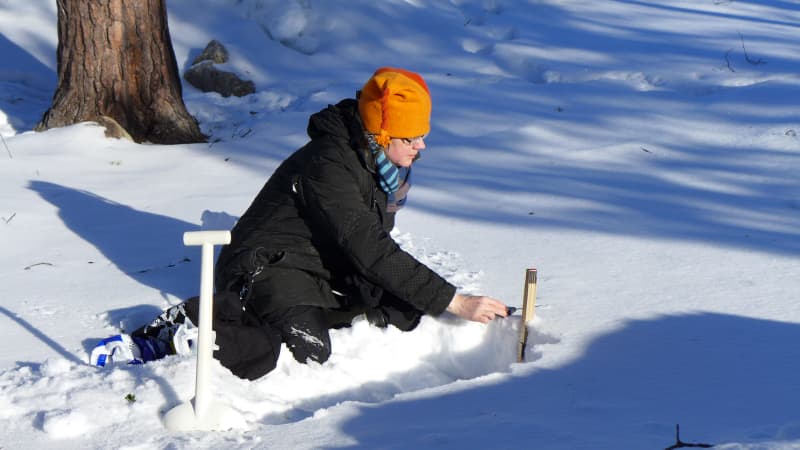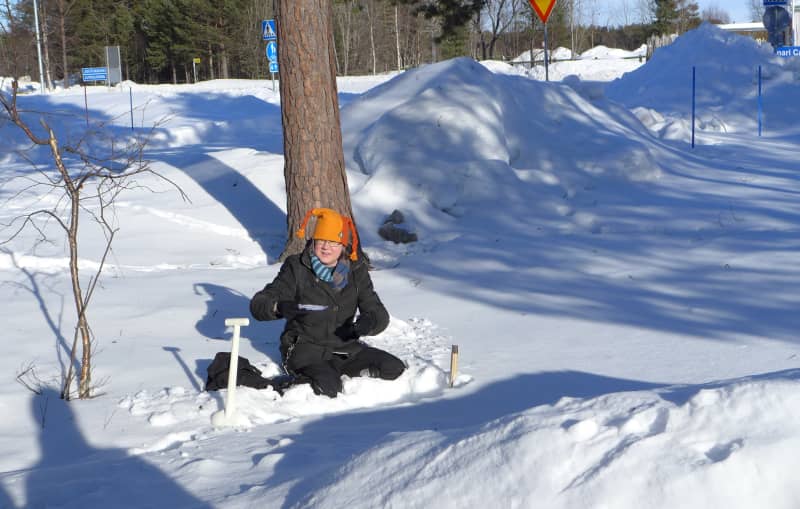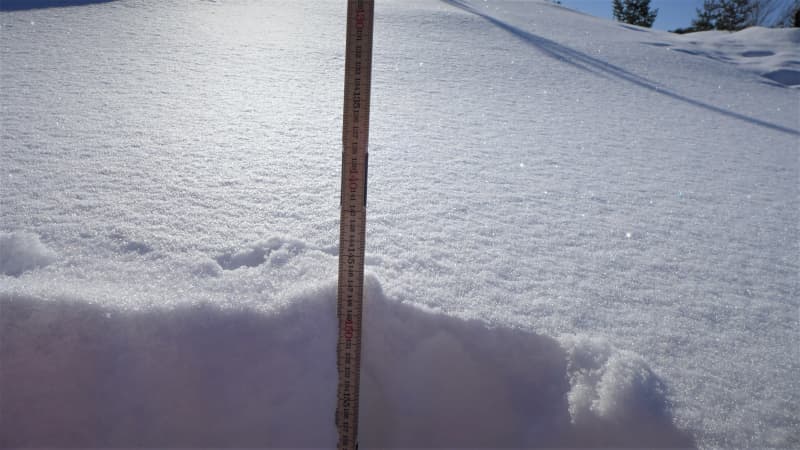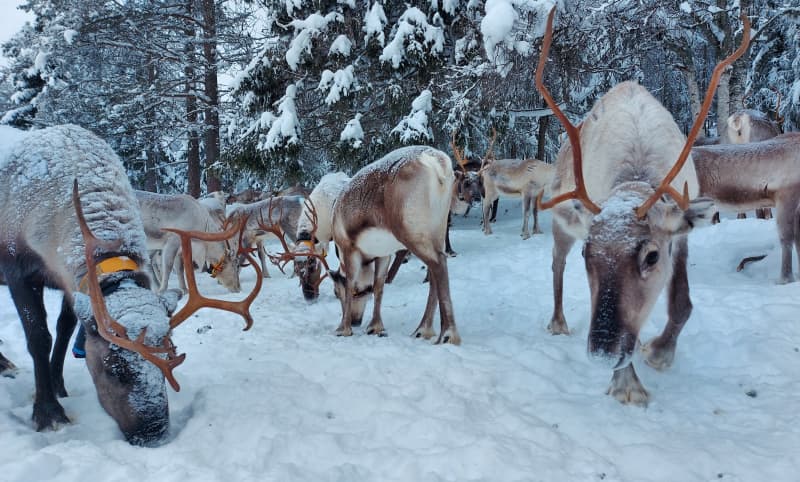
The winter snow cover is not an unchanging blanket, but the snow crystals are shaped over time. Anyone could make the snow observations that scientists long for.
Spring is advancing. During Easter, the temperature is predicted to drop to ten degrees in southern Finland, in some places even more. At the same time, the snow cover is dwindling, but especially in Northern Finland, skiing is still carried on high poles.
The reindeer herders have told the researchers that the structure of the snow has been very easy this winter. However, Rasmus says that in the Arctic region, very little research is done on snow.
– Certain things about the snow are observed quite a bit regularly. In Finland, observing the structure of the snow cover is done once a week in Sodankylä, and that’s it.
The problem is common throughout the Arctic region, as you can read in the article in the Science publication. In Finland, the depth of snow is measured at the observation stations of the Finnish Meteorological Institute. The determination of the water value of snow is done by the Finnish Environment Agency in different parts of the country.
An ordinary citizen could collect the information scientists want about the snow. All you need is a length measure to find out the depth of the snow and hand-tested observations of the snow’s properties.
Sirpa Rasmus digs a hole in the snow cover and measures the temperature first at the surface and then deeper.
– The coldest is right on the surface. It might even be colder than in the air, a little colder. When we start to go down, it usually gets warmer there.

According to the researcher, the snow cover is an exciting material because it preserves past temperatures. If there has been, for example, a really cold period of frost followed by mild weather, the central parts of the snow cover can be colder than the air.
– In general, however, when you go lower, the temperature rises. In Pohni, the temperature can be close to zero all winter, says Sirpa Rasmus.
Snow properties change
A soft layer of snow has fallen on the surface of Hange in freezing weather. The frost after the sheltered weather has hardened the layer below it, but various snow crystals can be found when examining the lower layer.
– Every snow crystal that falls on the snow cover begins to mold and actually molds throughout the winter, Rasmus illustrates while digging the project.
Deeper there are already slightly older crystals. They are usually a little more rounded and have started to bond together. Stiffer snow is formed, which is not as powdery as on the surface.
The icy layers feel different and the crystals are frozen together. Hawthorn-like snow has often formed in the ground layers in the north, the snow scientist explains.
– We are talking about a deep shovel, which is a familiar thing, at least to children living in the Nordic countries, when digging a snow pit. At the bottom there is a lumpy, sugary crystal that doesn’t really stay together.
Snow measurement by a citizen is possible
Observing the properties of snow does not necessarily require fancy measuring devices.
According to Sirpa Rasmus, there are international standards for measuring snow pits.
– If there are no measuring devices, you can use such a simple hand test. When pushing into the layers of snow, we first try to see if a fist sinks, a finger sinks, or a knife blade sinks.
You can use your own nose to help measure the breaking point of the layers of thick skin. You can estimate the required pressing force yourself.
– You have to use such force that you can comfortably press on your own nose. It’s such a standard power.

Observations can be reported, for example, to the winter monitoring website, from where they end up in the knowledge of researchers.
According to Sirpa Rasmus, the problem is common: not many observations are made. It affects how one is able to monitor changing conditions and support local businesses that need to adapt to changing conditions.
– All the observations related to weather, snow and ice also improve our chances of making short-term forecasts, for example with spring floods in mind, and longer-term climate forecasts.
The structure of the snow cover has a big impact on reindeer husbandry
The effects of climate change are beginning to be seen in Finland’s snow situation.
In southern and central Finland, the snow cover is no longer as thick as in previous winters. In the north, on the other hand, the opposite is true, and there may be even more snow. Mild periods also hit Lapland more often, and the project will have more ice layers.
Snow insulates well, and the rapid turn of a warm autumn into a snowy winter can cause difficulties for the reindeer.

A wet and thick layer of snow that has fallen on frost-free ground freezes if the snowfall is followed by a period of hard frost from the beginning of winter. Studies have found that such a situation causes the growth of molds on the surface of the earth, which is promoted by the heat of the earth and the moisture of the snow.
The researchers of the Natural Resources Center found harmful substances in the surface vegetation of the earth under the hange.
In the winters of recent years, the phenomenon has probably contributed to the death of reindeer as well.
– The winter of 2019–20 was difficult in almost the entire reindeer husbandry area and there was a lot of snow, but also ice, and there were probably molds and mold poisons. That winter, at least 20,000 reindeer died, and then the reindeer yield collapsed and the slaughter numbers the following fall, Kumpula says.
The northern parts of the reindeer husbandry area had a difficult winter in 2021–22 as well. Then a thick, wet layer of snow came to the frost-free ground, it froze and stayed for the whole winter.
– We did research for the ministry on plant samples and found three different mold poisons. Quite reasonably high concentrations, but it cannot be said for sure how big an effect they have on the reindeer’s health. They probably have an effect in addition to how the reindeer get less food, says Kumpula.
It is estimated that climate change will also change the winter conditions in the north to such a degree that severe winters will become more common.
– There are suddenly colder periods, when it snows and the snow can be very wet. The ground has not had time to freeze properly like when the so-called proper winter is coming. At least the signs suggest that the probability of such winters is increasing.
